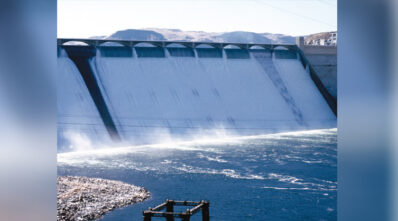India is committed to developing alternative energy sources
By EPR Magazine Editorial March 11, 2023 12:50 pm IST
By EPR Magazine Editorial March 11, 2023 12:50 pm IST

The small hydropower market on a global scale was valued at USD 2.07 billion in 2021 and is projected to grow at a compound annual growth rate (CAGR) of 2.8% from 2022 to 2030, largely driven by the increasing adoption of renewable energy sources for power generation.
Small hydropower projects are categorized based on size, varying across different countries. In India, small hydropower plants with a capacity of 25 MW or less are considered small. The Ministry of Power was responsible for overseeing hydropower until 1989 when plants with a capacity of up to 3 MW were transferred to the Ministry of New and Renewable Energy (MNRE). Since then, the MNRE has implemented several initiatives to promote small hydropower, such as the “Optimizing Development of Small Hydro Resources in Hilly Regions of India” project, which received technical assistance from the UNDP-GEF, and an India-Renewable Resources Development Project that includes a small hydropower development component aimed at constructing 100 MW of canal-based small hydropower projects. In November 1999, the MNRE was also entrusted with managing small hydropower plants with a capacity of up to 25 MW.
According to the Small Hydro Database of July 2016 developed by the Hydro and Renewable Energy Department (formerly known as the Alternate Hydro Energy Centre) of IIT Roorkee, there is an estimated potential of 21,133 MW from 7,133 sites in India for power generation from small or mini hydropower projects. Roughly half of this potential is located in hilly states such as Arunachal Pradesh, Himachal Pradesh, Jammu and Kashmir, and Uttarakhand. In contrast, the other potential states are Maharashtra, Chhattisgarh, Karnataka, and Kerala. To attract private-sector investments, these states receive focused attention through close interaction, project monitoring, and policy environment reviews.
The journey towards renewable energy in India
India heavily relied on coal to meet its energy demands as a developing nation at independence. Nevertheless, India has consistently pursued alternative energy sources to promote sustainable development. Hydropower was the first alternative, with major hydroelectric power projects emerging over time, aided by policy and regulatory initiatives facilitating investment. Today, India ranks fifth worldwide in terms of usable hydropower potential.
In the 1950s, the Bhabha Atomic Research Centre (BARC) was established to ensure India’s long-term energy independence. Today, India is the only developing nation with domestically developed, demonstrated, and deployed nuclear reactors for electricity generation, thanks to decades of extensive scientific research and technology development.

We use cookies to personalize your experience. By continuing to visit this website you agree to our Terms & Conditions, Privacy Policy and Cookie Policy.